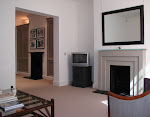I work mainly on listed buildings and properties within conservation areas where the replacement of windows usually has to be implemented on a strictly like-for-like basis (i.e. timber for timber, sash for sash, with allowances made for modern sealed glazing units). There are many firms out there offering the benefits of sealed glazed units applied to traditional timber window designs. Having spotted their "conservation range" I recently contacted Mumford & Wood who are assisting me with the planned replacement of Georgian style sash windows. I will post once "before & after" comparisons are available.
Where doors are concerned there is often more scope for choice as the rules are somewhat less stringent (in non-listed buildings of course). In an ideal world no expense would be spared. If the budget allows for this I would not hesitate in contacting Longden whose doors grace many of the top developments in central London.
Should the budget only stretch as far as an improvement, I would at least consider solid paneled doors, oak if possible (in spite of the tradition for pine where painted doors are being specified). As always, when savings have to be made, one's understanding of doors will be tested far more than it would be if the made-to-measure route were an option:
1. the sizes of existing door openings will dictate whether standard sizes will fit;
2. some doors will more than likely have to be fire rated and sourcing these to match the style of the non rated doors is not quite as easy as it sounds;
3. as a result a combination of made-to-measure and standard sizes often ends up being the only possible way forward.
So what do all these different types of doors cost?
One shortcut to the answer is provided by this table available on the GreenSpec web site. The purpose of the table is to assess the cost of each type of door and its maintenance over a 60 year period and therefore needs to beread with its scope in mind. The background research provides however, at the time of writing, a good indication of how much each door will cost you (although fitting and decorating costs have probably undoubtedly increased since).
